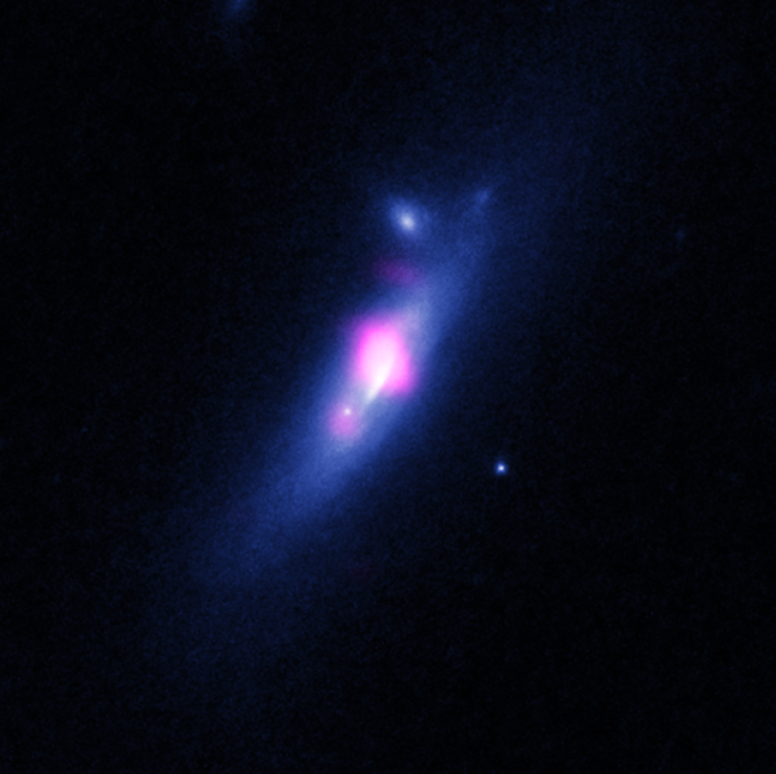
 Credit: X-ray: NASA/CXC/Univ of Colorado/J.Comerford et al; Optical: NASA/STScI
Credit: X-ray: NASA/CXC/Univ of Colorado/J.Comerford et al; Optical: NASA/STScI
"Dualing" Black Holes
Supermassive black holes having masses of millions or even billions of suns are nearly ubiquitous at the centers of galaxies. A major mystery is why. Astrophysicists have good understanding of how black holes having masses of a few times the sun's mass form: the core collapse of a massive star followed by explosive detonation of the star as a supernova. But the origin of these supermassive beasts is currently a matter of controversy. Did they form in the early Universe more-or-less as they are now? Or were they built up from mergers of lower mass black holes over long periods of cosmic time? Astronomers have recently identified a group of interesting, interacting galaxies called "dual active galactic nuclei". These dual AGN are created by the mergers of galaxies and are distinguished by double supermassive black holes (relatively) close to each other. The image above is a combined Hubble Space Telescope optical and Chandra X-ray Observatory X-ray image of a particularly interesting example of one of these dual AGN systems, a galaxy merger called SDSS J1126+2944. The X-ray emission from the black holes seen by Chandra is related to how much matter the black holes are swallowing, and thus related to the masses of the black holes. Studying these dual AGN systems is important to help us understand the relation between galaxy mergers and the growth of supermassive black holes. This duality is believed to last only a relatively short time before the two black holes are dragged together to eventually coalesce (an event which would shake the very foundations of spacetime). Astronomers are particularly interested in SDSS J1126+2944, since the two black holes in this system apparently have the largest difference in mass of any dual AGN yet discovered; this might suggest that supermassive black holes grow by swallowing their lower-mass partners.
Published: February 8, 2016
<
HEA Dictionary ● Archive
● Search HEAPOW
● Other Languages
● HEAPOW on Facebook
● Download all Images
● Education ● HEAD
>

Each week the HEASARC
brings you new, exciting and beautiful images from X-ray and Gamma ray
astronomy. Check back each week and be sure to check out the HEAPOW archive!
Page Author: Dr. Michael F. Corcoran
Last modified Monday, 26-Feb-2024 17:11:23 EST


